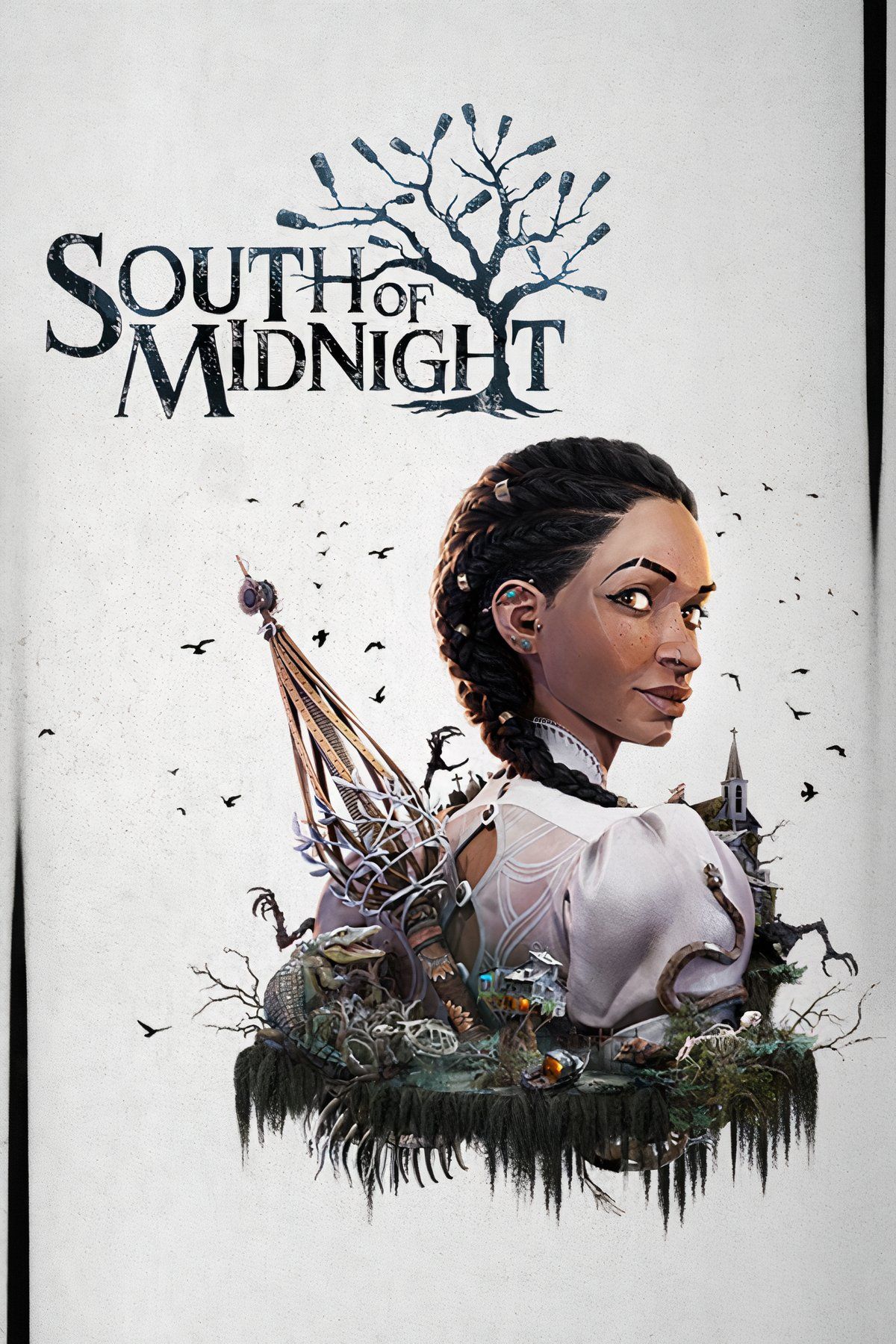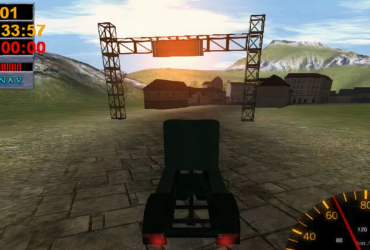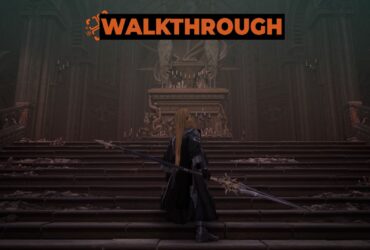South of Midnight is the sort of game you’d feel nostalgic for if you played it 15 years ago. You’d have conversations starting with lines like “I know the combat is repetitive, but…” while your friends scoff at you. You’d remember it in a way that accentuated its best features and obscured its flaws, you’d think about how you felt playing it rather than how it actually played. Put simply, it’s a game I think some people will love, but I’m not sure many of them could tell you why.
There’s an obvious charm to South of Midnight, from the plucking bluegrass banjos to the smooth-talking characters, it’s full of cajun flavour throughout. Each individual part of South of Midnight is enjoyable on its own, but there never seems to be enough of it to go around. Mechanics feel too repetitive, sections overstay their welcome without much justification, and the rich tapestry being woven in the background all starts to blur into one. There’s just not enough gumbo in the pot.
South Of Midnight’s Combat Gets Repetitive Quickly
This is most evident in the combat. You have one basic move – you can attack by tapping X. There’s not much else you get to do beyond that. B lets you dodge, and with upgrades this dodging can be chained into an attack, and there are a handful of power ups, but they never feel that connected. Not every game needs combo-filled character action speed and style, but South of Midnight needed something more than it has.
This single attack button is complemented by powers, such as pushing or pulling enemies around, possessing them to attack their allies, or locking them in place so you can deal heavy damage. Again, these are all fine ideas, and they do have minor evolution as you upgrade them. But it never feels like enough for how often the game throws you into combat against the same basic enemy archetypes.
Boss battles, while a little dated with their classic reliance on health bar stages and attacking vulnerable points at strategic moments, would feel closer to what South of Midnight’s combat should be, but most of the abilities don’t actually work on bosses. These battles do come with excellent music that feels cinematic and narrative-driven in ways most video game music avoids in favour of grandiose atmosphere. The chase sequences that interrupt boss battles are also a high point, making great use of the game’s twisted Deep South aesthetic.
While there’s a lot of geographical flavour, the stop-motion movements don’t feel as pronounced as I hoped.
South Of Midnight Offers A Rich Narrative
The platforming is similar to the combat – you get a few more tricks as the game goes on, but it still doesn’t feel like enough to build an entire journey around. Here though, it gets more of a pass. Though what you can do isn’t that varied, the settings the game throws at you are, giving you a lot of diverse and unexpected locations to explore. It’s linear, so you’re never slowed down by semi-open world sections either, but there are always secrets lurking if you want to look. It’s a perfect balance.
The narrative itself offers this balance, too. Though initially built around protagonist Hazel trying to rescue her mother after their house is washed away in the flood, we’re quickly pulled into the black velvet tragedies of the area in eras gone by. I was fearful at first when the opening level walked Hazel through her new powers that we’d spent too long dancing around the ‘okay, guess this is happening’ periphery of the story (your girl Hazel is a yapper), but it quickly dives in deep.

Related
“They were originally going to do it with that expansion and then I don’t know what happened”.
The first half of the game mostly deals with eccentric characters abandoned by time and tragedy, with missing children, murders, deathly accidents, and folks run off their land all building the sadness around the mythos of South of Midnight. By the second half, these disparate elements begin to connect more into a central story, and focus swings back to Hazel and her mother. For a short game (roughly 12 hours), that divide works because you’re never too far away from what Hazel is actually going through.
The fact the corruption in the area is referred to as ‘stigma’ and emanates out of an old, plantation era mansion where Hazel’s white father lived and was disowned by his family is clever, but mostly without consequence. The game doesn’t do enough exploration of the racial themes at the head of a game where our mixed race protagonist lives with her Black mother in a tin shack while her white grandmother lives in said mansion to build on this symbolism.
South Of Midnight Is A Successful Throwback
South of Midnight is not a particularly ambitious game but, without irony, I kind of want to give it points for not trying. We’ve seen so many games attempt too much, stretching out their development time and budget, just to arrive broken and bloated and overexerted. South of Midnight is a short game that plays like so many other games you’ve played before, and if you like those games (Alice: Madness Returns, Bramble: The Mountain King, Psychonauts, Compulsion’s own Contrast), you’ll probably like South of Midnight. It’s an average little game, but that’s what it’s going for. It delivers on expectations.
South of Midnight doesn’t reinvent anything, but it does a competent job of everything it attempts. With all that’s going on in gaming right now, that’s worth something. South of Midnight respects your time, delivers an emotional narrative, trusts that you know how to play it, and is bursting with texture and taste. This is a future classic for someone, and it might just be you.

- Released
-
2025
- Developer(s)
-
Compulsion Games
- Dark, well-told story with fascinating characters
- Beautiful and unique setting
- Consistently competent gameplay
- Fails to take advantage of its deepest themes
- Gameplay gets repetitive by the end
- Lack of meaningful progression












Leave a Reply